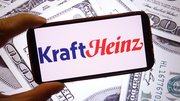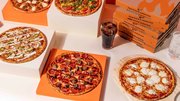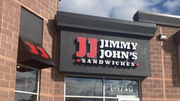Article
Chipotle's IPO success influences fast-casual growth
Fast-casual restaurants as a whole are racking up impressive numbers, but are they enough to sustain Wall Street's appetite?
February 26, 2006 by Julie Sturgeon — independent journalist, CEOEditor, Inc.
Fast-casual restaurants have proven adept at delivering what the public wants: fresh, nutritious food with speed and convenience.
Now they're poised to bring what investors want: solid IPOs.
Denver-based Chipotle Mexican Grill's successful IPO in January 2006 certainly started tongues drooling throughout financial offices across the country. The story is the stuff of public legends: The eatery's stock debuted at $22 a share after analysts like Buckingham Research initiated coverage with a strong buy rating and a $36 a share price tag. Chipotle closed at $44, doubling on its first day of trading — the best opening-day gain by a U.S.-based new issue in more than five years, according to Thomson Financial. In the restaurant world, it ranked second only to Boston Chicken's 143-percent increase performance back in 1993.
Analysts believe Chipotle can grow from its current 489 units to 2,000 in the long-term picture, with long-term earnings growth of 25 percent, driven by 15 percent-plus unit growth. Nicole Miller, a senior research analyst with ThinkEquity Partners LLC, headquartered in San Francisco, issued a buy rating and a $50 price target.
"Historically, Chipotle has grown at rates even faster than the fast-casual group in total. We project earnings from operations of $0.51 per share (or $.89 per share excluding the 42 percent tax rate). Total revenues are expected to increase 19.8 percent to $739.3 million, partially reflecting a 6 percent same-store sales increase," she wrote in her initiation of coverage report on Feb. 16. Her 2007 projections are just as ambitious.
ThinkEquity anticipates a 29.9-percent increase in earnings from operations to $.67 per share (or $1.15 per share excluding the 42 percent tax rate). Total revenues are expected to increase 19.5 percent to $88.8 million, partially reflecting a 5 percent same-store sales increase.
That is unheard of in the restaurant industry, said Wally Butkus, a principal with Restaurant Research LLC in Redding, Conn.
"And I'm pretty sure Burger King's IPO decision was a result of Chipotle's success," Butkus said. "You want to strike when the iron is hot."
The chain has triggered cash register envy — and a "me, too" mindset — among the restaurant industry. Panera Bread's profits rose 35 percent in 2005, the same year it opened 139 stores, bringing its total units now to 877. Same-store sales increased from 7.2 percent in December 2005 to 10.2 percent in January 2006.
So it's no surprise analysts like Miller say the next IPO could spring from a pool that includes Pei Wei Asian owned by P.F. Chang's or, down the road, California Pizza Kitchen's ASAP fast-casual spin-off.
"If other companies are looking at the possibility of going public, they should certainly look at a lot more than Chipotle's IPO to make the decision," said Chris Arnold, the chain's spokesperson. "They need to evaluate their alternatives and do careful, long-range planning for the growth of the business. We thought that IPO was the best solution for us, but that may not be true for everybody."
For one thing, Chipotle is backed by McDonald's, only the largest restaurant in the world, Butkus points out. Currently, McDonald's continues to own a controlling interest in CMG shares.
"There are not that many other chains I would say are large enough to really warrant an IPO. You have to get some critical mass before it makes sense," Butkus said.
Even that isn't a panacea — neither Jack-in-the-Box's Qdoba nor Wendy's Baja Fresh have grown as quickly as Chipotle, although he likes Qdoba's same-store sales increases, which were 7.9 percent in 2005. And Boston Chicken stumbled famously on the public stage, recently needing rescuing from McDonald's itself.
Remember Back Yard Burgers, a 53 percent first-day gainer back in 1993? It's stock now sells consistently for less than its IPO price.
That pesky labor cost — always higher for fast-casual eateries than quick-service – presents one ever-looming stumbling block, according to Frank Holdraker, president and CEO of Creative Eateries.
"I think we will see more IPOs, but not a glut of them. I think they're going to be well-thought-out, cautious ones," he said.
Today's consumer
In her buy report, Miller hones in on the fact that Chipotle's food — naturally raised pork, beef, chicken and organically grown produce — exceeds "good" and strikes a chord as "relevant" with today's customer. But the commitment to higher standards this strategy requires carries risk in both the price and availability categories. It's her equivalent to the "professional stunt drivers only — do not try this at home" warning.
Yet her real caution evolves around an issue she admits she doesn't have an answer to. Before Wall Street settles in comfortably with the fast-casual category, investors need a clearer picture of its staying power. Today, even at a $7-billion industry growing at 12 percent, the niche could still be sucked back into the quick-service segment that birthed it, or absorbed by the dining chains it emulates.
"Take McDonald's as a fantastic example," Miller said. "They're quick, they're convenient, but now they're offering parfaits and chicken breast sandwiches with salads. They've really evolved their menu, so I think that's a longer-term big question."
Holdraker has no hesitation who will win the tug-of-war. "Upgrading fast-food to fast casual is the next logical step. Customers expect more for their dollars. It's as simple as that," he said. "We never used to have FedEx and now we do. But there was a generation that didn't know we needed it. Fast Casual is the same thing, only more subtle."
Julie Sturgeon is an Indianapolis-based journalist with 20 years of professional writing experience in finance and trades.
Legal IssuesCoffee / Specialty BeveragesAsianTrends / StatisticsMarketingBurger/Steak/BBQInternational FranchisingBakery CafeSandwichFranchising
Related Media
FranchisingPresented ByJeff's Bagel Run
Presented ByJeff's Bagel Run












